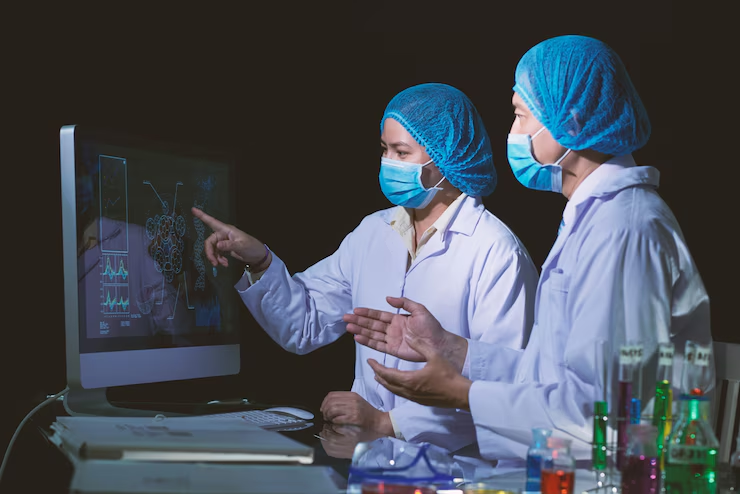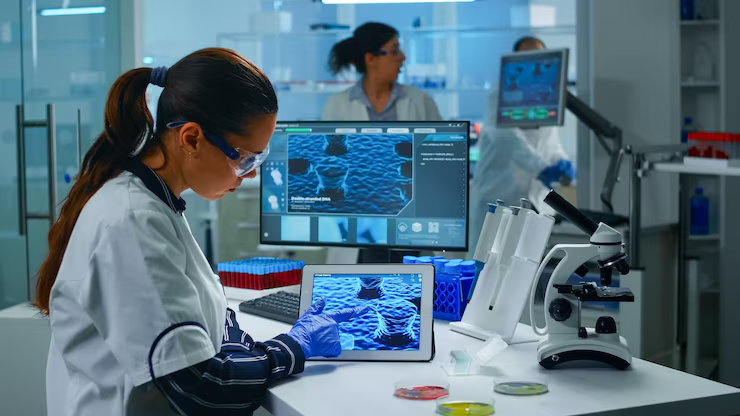Case Study > Accelerating Medical Image Processing and Diagnoses for a Healthcare Provider Using Machine Learning
Healthcare
Accelerating Medical Image Processing and Diagnoses for a Healthcare Provider Using Machine Learning

Focus Areas
Medical Imaging
Machine Learning & Computer Vision
Clinical Workflow Automation

Business Problem
A large healthcare provider faced increasing diagnostic backlogs due to rising patient volumes and limited radiology resources. Radiologists were overwhelmed by the manual analysis of high-resolution medical images (X-rays, CT scans, MRIs), leading to delays in diagnosis and treatment initiation. The provider sought to improve turnaround time for image interpretation without compromising diagnostic accuracy.
Key challenges:
Image Volume Overload: Daily imaging scans exceeded processing capacity, resulting in reporting delays.
Manual Review Bottlenecks: Radiologists were burdened with repetitive visual tasks, increasing fatigue and risk of oversight.
Inconsistent Accuracy: Variability in interpretation across facilities impacted diagnostic reliability
Lack of Integration: Existing PACS systems did not support intelligent image triage or real-time insights.
The Approach
Curate designed and deployed a machine learning-based image analysis pipeline that automated the triage, classification, and flagging of medical images for potential anomalies. Integrated within radiology workflows, this solution significantly reduced review times while enhancing diagnostic consistency and scalability.
Key components of the solution:
Discovery and Requirements Gathering: Curate partnered with the healthcare provider’s radiology, IT, and compliance teams to:
Identify key image modalities (e.g., chest X-rays, MRIs) for automation
Define diagnostic categories (e.g., tumor detection, pneumonia signs)
Establish performance benchmarks (precision, recall, latency)
Ensure compliance with HIPAA and FDA regulatory frameworks
Model Development and System Integration:
Data Preparation: Curated a dataset of over 1 million de-identified imaging scans, annotated by expert radiologists.
Model Training: Built convolutional neural networks (CNNs) using transfer learning and custom architectures for modality-specific tasks.
Use Cases: Included early detection of lung abnormalities, bone fractures, and brain lesions.
Performance Optimization: Models achieved over 92% precision and recall across key diagnostic targets.
Workflow Integration: Deployed via REST APIs into the provider’s PACS and EHR systems to surface alerts and classification labels directly to clinicians.
Automation and Quality Assurance:
Auto-Triage: Flagged high-risk images (e.g., suspected tumors, fractures) for prioritized human review.
Heatmap Visuals: Used Grad-CAM overlays to provide visual explanations of anomaly zones, aiding radiologist interpretation.
Continuous Learning: Enabled incremental retraining with newly reviewed images to improve model robustness.
Redundancy Checks: Maintained manual review protocols for flagged scans to ensure quality assurance.
Stakeholder Engagement & Change Management:
Radiologist Collaboration: Involved radiologists in validation, feedback, and refinement of model predictions.
Compliance Oversight: Ensured all image handling and storage adhered to HIPAA and FDA guidelines.
Training & Adoption: Delivered workshops on AI-assisted workflows and interpretation of AI-generated outputs.
Phased Rollout: Initiated with select facilities and scaled following positive results and clinician acceptance.
Business Outcomes
Faster Diagnostic Turnaround
Automated triage and classification reduced image interpretation time by over 50%.
Enhanced Diagnostic Accuracy
Assisted diagnoses led to improved anomaly detection consistency, especially for rare and subtle indicators.
Scalable Imaging Workflows
Enabled radiologists to focus on complex cases while automation handled routine image triage and classification.
Customer Value
Faster Diagnoses
Reduced time-to-treatment for critical patients, improving health outcomes.
AI Transparency
Visual outputs built trust in model reliability.
Sample Skills of Resources
Computer Vision Engineers: Developed and fine-tuned CNNs for medical imaging analysis.
Radiology Consultants: Provided expert annotations and feedback for model training.
DevOps Engineers: Built secure, scalable pipelines for model deployment and monitoring.
Data Privacy Specialists: Ensured end-to-end data anonymization and compliance.
Project Managers: Oversaw stakeholder alignment, pilot execution, and change management.
Tools & Technologies
Machine Learning & CV: TensorFlow, PyTorch, OpenCV, Keras
Image Management: DICOM, PACS integration
Data Processing: Python, NumPy, Pandas
Deployment & APIs: Docker, REST, FastAPI
Visualization: Grad-CAM, Streamlit dashboards
Security & Compliance: HIPAA-compliant AWS infrastructure, FDA 21 CFR Part 11 alignment

Conclusion
By integrating machine learning into medical image workflows, Curate helped the healthcare provider transform diagnostic operations—reducing turnaround times, enhancing accuracy, and enabling scalable, AI-assisted care. The project demonstrated how targeted automation, grounded in clinical best practices and robust ML models, can elevate the speed and precision of modern healthcare delivery.
All Case Studies
View recent studies below or our entire library of work

Building a governed data foundation
Curate Partners helped a leading bank modernize its data product and governance framework to enable real-time insights and enterprise reporting.

Building a single source of truth for customer data
A leading healthcare organization was operating with fragmented customer data across marketing, service, and operational systems.

Modernizing Medicare enrollment journeys
Healthcare case study Modernizing Medicare enrollment journeys A regional healthcare insurer partnered with Curate Partners to streamline enrollment workflows and deliver a seamless, member-first experience.

Marketing tech optimization for scalable growth
A Global Tech SaaS company was grappling with unchecked Technology sprawl—tools were being acquired through decentralized budgets, leading to redundant platforms, siloed data, rising costs, and poor integration across the enterprise.